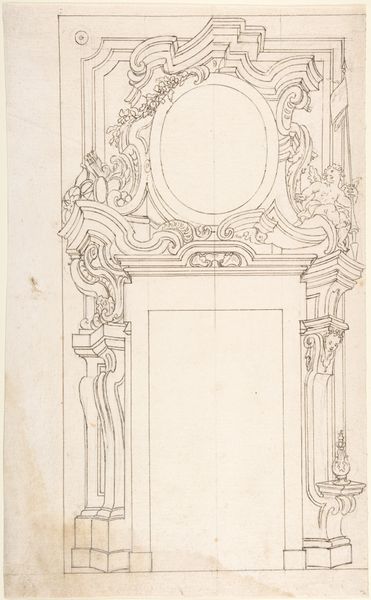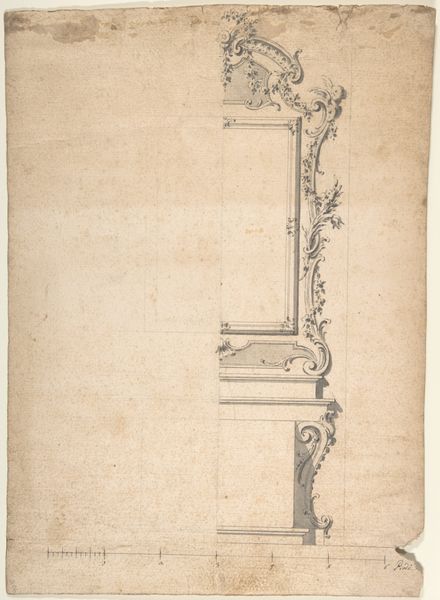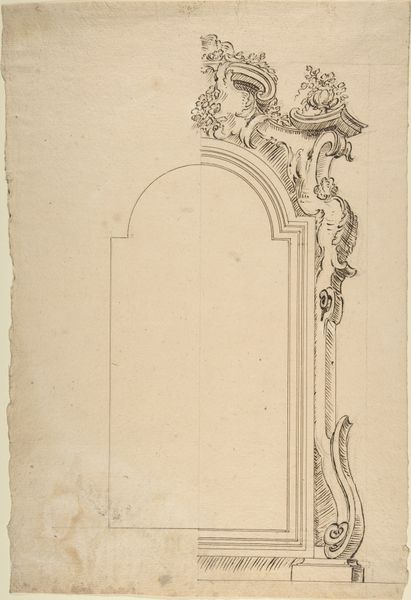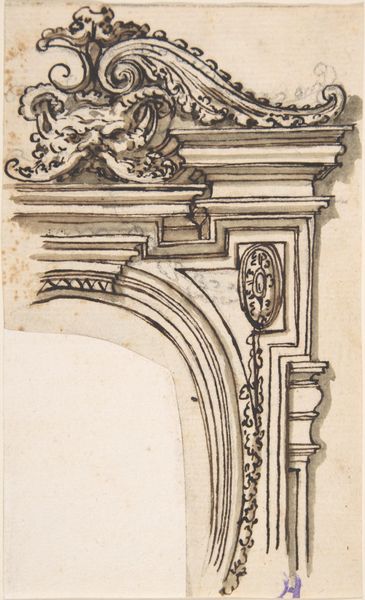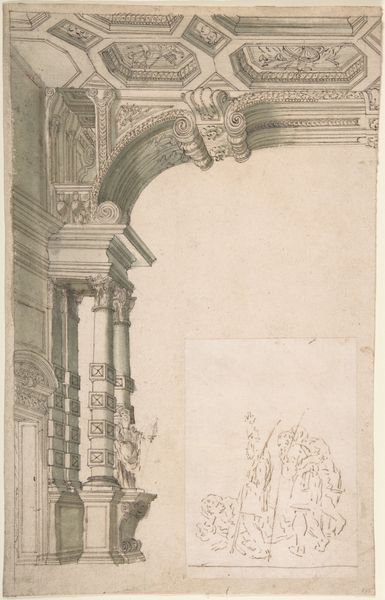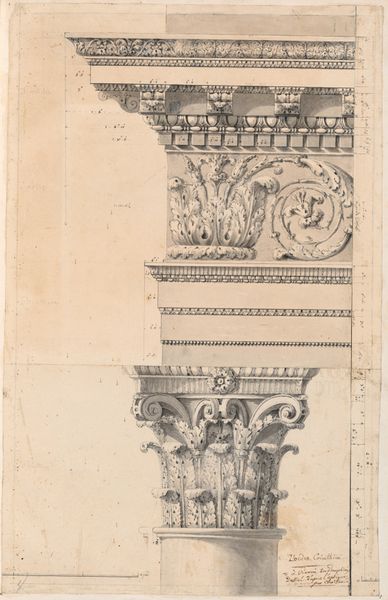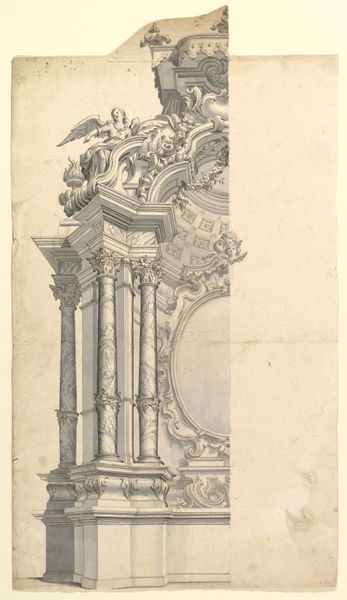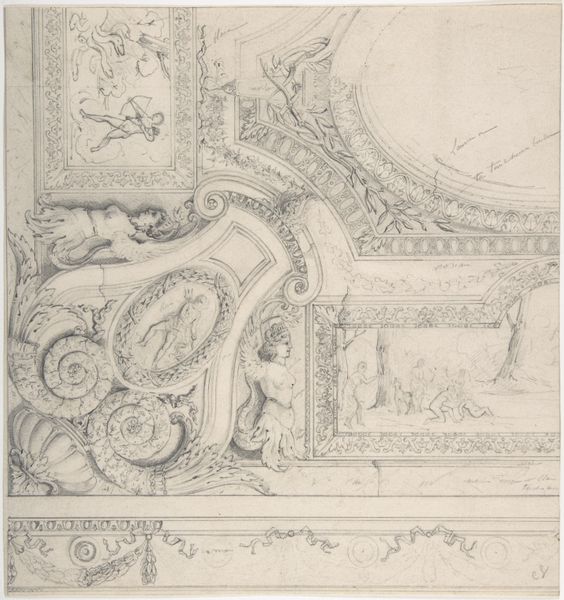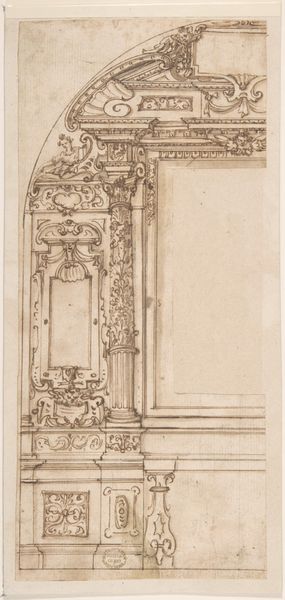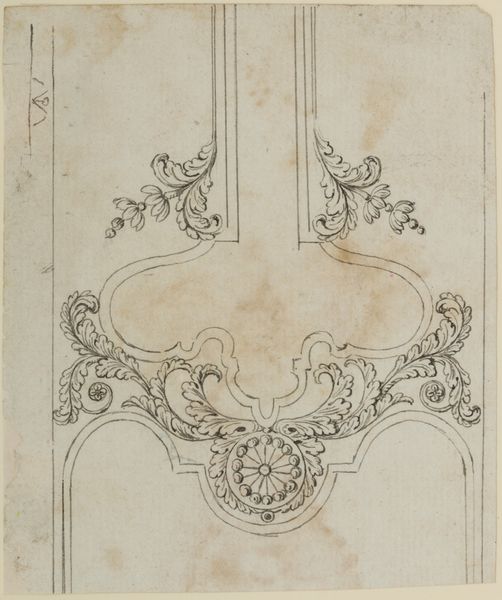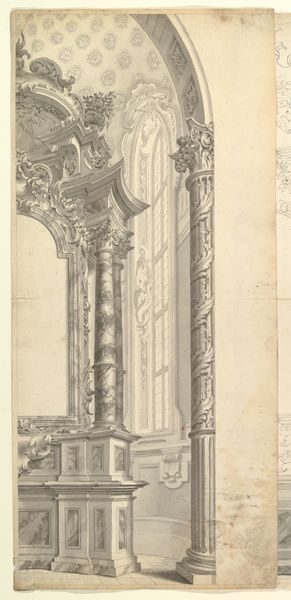
drawing, print, pencil, architecture
#
architectural sketch
#
drawing
# print
#
form
#
11_renaissance
#
geometric
#
pencil
#
line
#
academic-art
#
architecture
Dimensions: 11 7/16 x 3 5/16 in. (29 x 8.4 cm) maximum dimensions; strip has been added to the top
Copyright: Public Domain
Curator: The architectural sketch before us, titled "Design for the right half of a chimneypiece," is from the period of 1600-1700, origin unknown. You can find it here at the Met. Editor: It strikes me immediately as something incredibly detailed and precise. The fine pencil work creates a delicate, almost ephemeral feel, even though the subject itself – a chimneypiece – would be a solid, weighty structure. Curator: The purpose of the chimneypiece moved beyond practical function into an assertion of wealth and status during this time. Only the elite could afford these grand statements of architecture and design in their homes. Editor: Indeed. I'm drawn to the layering of forms – the clean lines of the architecture contrasted against the baroque embellishments. There is a play of geometry in tension with ornamental extravagance. How do these visual details tell of its time? Curator: Look at the level of architectural ambition that the anonymous designer presents, signaling the rise of bourgeois confidence. The classical motifs reflect the desire to connect with a perceived golden age of European civilization, filtered and molded to promote their ambitions. The drawing may well have acted as propaganda on a minor, private scale. Editor: Absolutely. Note how the circular frame awaits a coat of arms or allegorical picture! It's fascinating how a space, a rectangle cut to enclose fire, demands that the designer then work within its rules: balance of light and dark, smooth, elaborate shapes. How cleverly these formal oppositions play out, giving it presence, a feeling of solidity and dynamism! Curator: It does prompt questions about access, the creation and enforcement of privilege, and the social meaning embedded in such "decoration" for patrons, the artists designing them, the artisans building them, and the vast numbers excluded from experiencing them directly. Editor: I agree. The beauty and clarity of form are intertwined, though, with implications for the society of its day. I wonder, who will have their eye warmed by such designs in centuries to come?
Comments
No comments
Be the first to comment and join the conversation on the ultimate creative platform.

